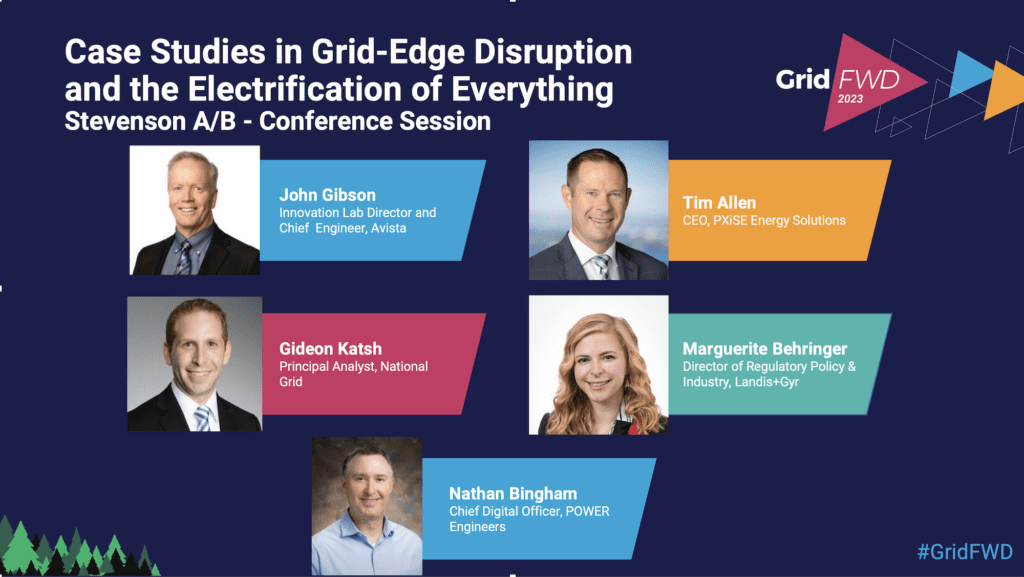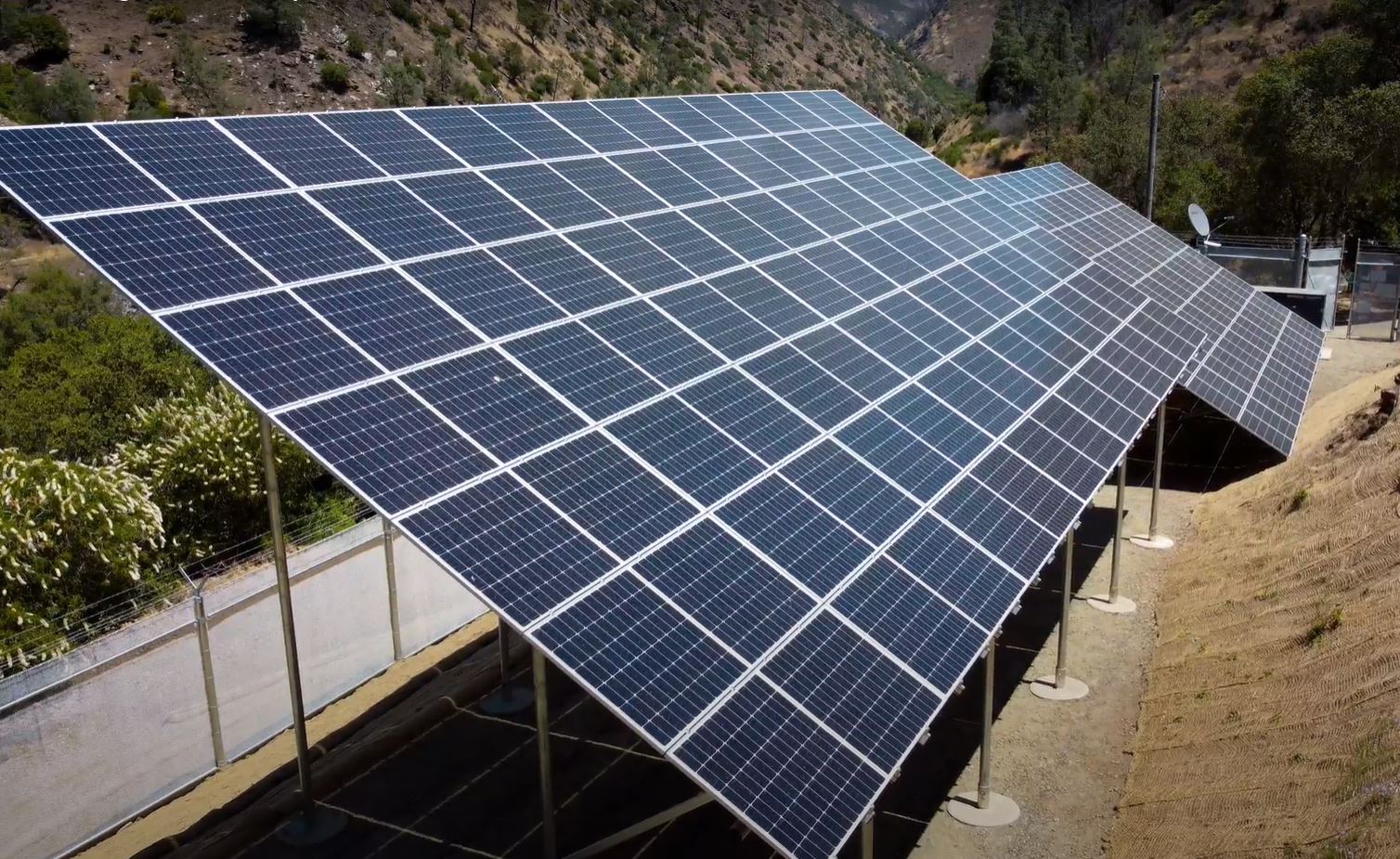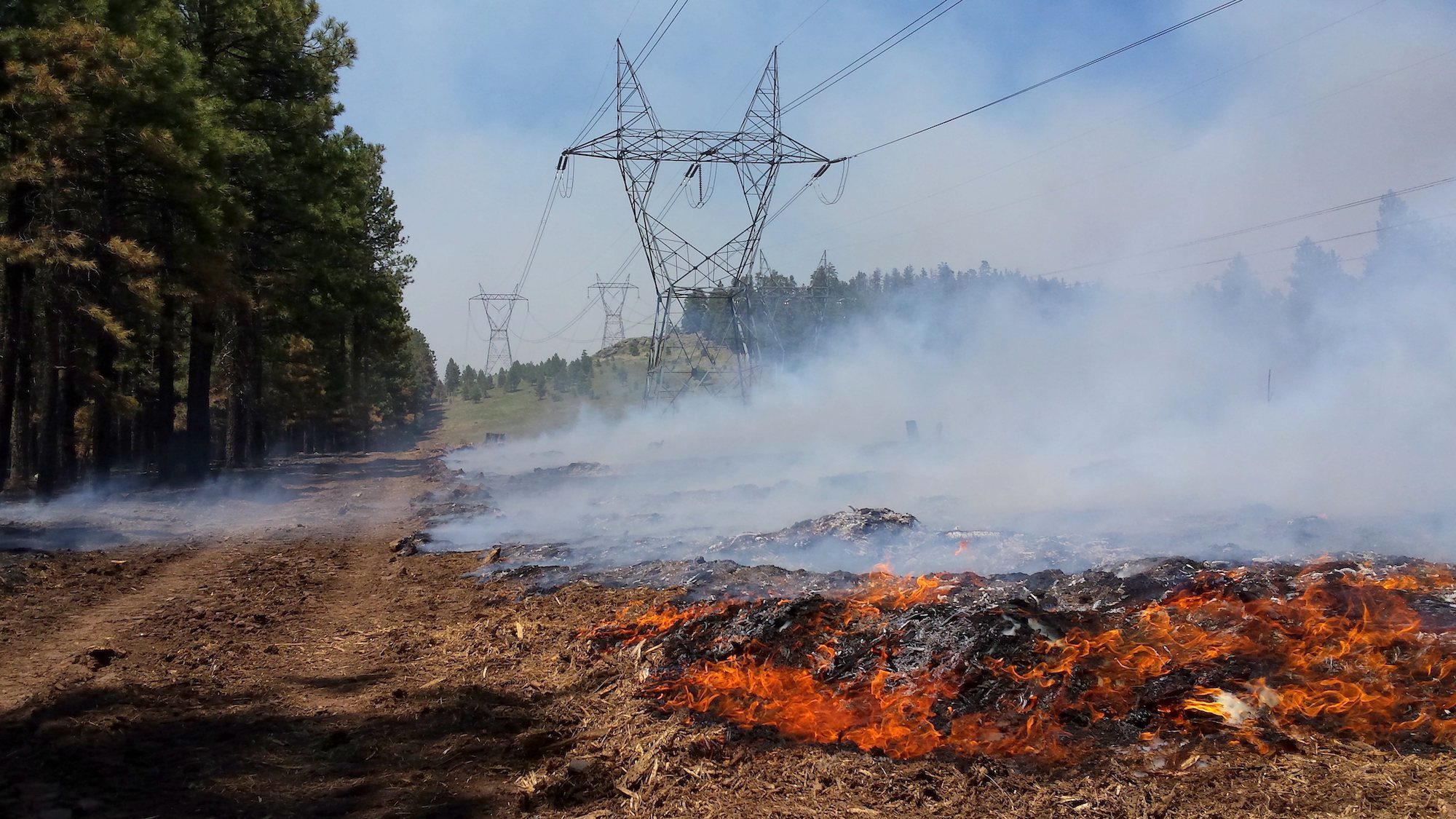Here’s another recap from GridFWD 2023, excerpted from an article in Public Utilities Fortnightly.
We continue to see expert commentary and insights arising from our sessions at GridFWD 2023. In this latest example, we hear from participants in a panel session entitled “Case Studies in Grid-Edge Disruption and the Electrification of Everything” from Tuesday, October 17. Below we provide an excerpt and a link for you to read the full article on Public Utilities Fortnightly.
Find more information from GridFWD 2023 in these articles:
- Empowering the Grid: Cutting-Edge Solutions for Resiliency in Tomorrow’s Grid
- Power to the People: AI and the Future of Energy

Last fall, energy leaders and innovators gathered in the Pacific Northwest at a regional conference called GridFWD 2023 to discuss the challenges and opportunities of grid edge disruption and electrification.
One panel on electrification, moderated by POWER Engineers Chief Digital Officer Nathan Bingham, included National Grid Principal Analyst for Clean Energy Development Gideon Katsh, PXiSE CEO Tim Allen, Avista Utilities Director of Avista Innovation Lab John Gibson, and Landis+Gyr Director of Regulatory Affairs and Industry Relations Marguerite Behringer.
The panelists in the discussion below talked about the need for utilities to embrace change and innovation, and to collaborate with third-party vendors and national labs to develop common architectures and interoperable technologies. They also emphasized the importance of data collection and analysis to optimize the grid and enable more efficient load management.
Nathan Bingham: There is such a wide range of opinions on what this electrification and energy transition means to our industry. As I’ve traveled around the country and talked with our utility customers, I’ve heard some of them react to the electrification of everything with, “It’s not that big of a deal and we think we’ve got it covered.” For others it’s, “This is going to disrupt everything, and we need three hundred percent more energy by 2045.”
I’ve realized that I hear such wide opinions on what the energy transition will take because the grid is just so complex, and each utility’s specific situation is different. So, electrification might take nothing for some feeders and a full rebuild for others.
Marguerite Behringer: For me, it’s the platform of possibilities that we are delivering today. The industry is putting a lot more sensors on the grid, and this innovative hardware is opening up an environment to build software solutions, AI, and machine learning on top of granular real-time data. The possibilities feel somewhat endless to solve some of these problems that we’ve been thinking about for a long time.
Gideon Katsh: If everything went electric today there may be some challenges, but for better or worse it’s not happening overnight. It does have to happen quickly to meet decarbonization goals, so we should act now, think about it, and determine what our strategies and plans are.
John Gibson: Over my career, the most exciting thing to me is to see the evolution of the utility’s engagement with the customer. I think in the future we will meet the customers where they are at. If the consumer is interested in affordable, reliable, safe delivery of energy, we will meet them there. If the consumer or a tribal entity is interested in sovereignty, energy independence, and clean energy, we will meet them there.
Tim Allen: The way we operate the grid and the way the markets operate are based on the old grid, old market, central generation model. Now we have generation distributed throughout the transmission and distribution system. One of the biggest things I see enabling [the energy] transition is using creativity, innovation, and collaboration to look at the way the markets operate, and the way utilities are managed, regulated, and operated.
You can read the full article here on Public Utilities Fortnightly.



